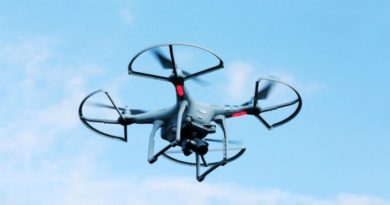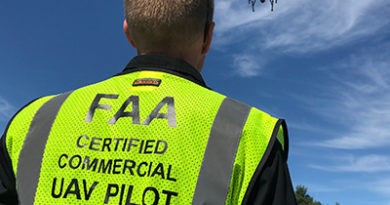How Drones Are Changing the Food Industry
Guest post by Emily Folk
Unmanned aerial vehicles (UAVs) are becoming popular tools in a variety of sectors. Specifically, the use of drones in the food industry supply chain has proven invaluable. From agriculture to production to delivery, they have the power to optimize the entire industry and take it to the next level.
Agriculture
The first step in the food chain is farming and harvesting. Crops depend on ground soil, sunlight and water to grow. Without the right conditions, there could be a potential shortage of crops. Drones, however, can help.
These UAVs have high-quality cameras and long-range controls. An agriculturist can fly one across fields to check on the state of the crops. Using infrared technology in the cameras, show how much water or heat a plant retains.
Further, some drones can collect samples from crops and plants for ingredients in things like paraffin and carnauba wax for coating. Other times, farmers need to examine invasive fungi to understand how damaging the species is.
Since drones can cover miles of ground, they act as the perfect monitoring vehicle for farms. They can carry sprays across a field — like pesticides or nutrients — and they can search for any animals that have run away. The sheer range of drones makes them ideal for agriculture.
Production
The production line is vast and has many moving parts. Heating and cooling systems, silos, piping and machinery are all critical components. With each of these systems, though, problems like leaks can emerge at any moment.
Manually monitoring each piece of equipment is next to impossible. Using a drone optimizes the process and keeps employees safe. Their high-resolution cameras can spot leaks and breaks. Then, workers can respond accordingly and fix the issues.
Using drones protect workers because sometimes the problem is in a difficult-to-reach or dangerous location. The drone can fly into small or high spaces so employees don’t have to endanger themselves.
Drones also come in handy when it comes to cleaning. Some UAV cameras have ultraviolet (UV) lighting, which picks up on dirty surfaces and lingering messes or bacteria. Sanitation is vital in the food industry, and drones help maintain the best standards.
Delivery
The last stop on the supply chain is, of course, the customer. With the rise of the COVID-19 pandemic, though, food services have had to adjust. According to Yelp, 60% of restaurants that closed during the outbreak will remain permanently closed.
Other services are trying to adapt to the new norm. People are turning to contactless pickup and delivery as the main option. However, drones are an innovative resource for delivery as well.
If there is a second wave of the coronavirus, then restaurants and food services will need to hone in on their use of new technology. The main challenge here would be figuring out how to deliver food properly. Keeping it intact, as well as warm or cold, would be key.
However, some businesses are already adapting to drone delivery. Pizza is easy to deliver this way since it doesn’t shift around too much, and the drone can securely transport the boxes.
It will now be interesting to see how companies adapt to the growing trend of drone delivery. Other industries, like pharmaceuticals, have gotten on board. It’s time for the food industry to follow.
A Drone-Based Industry
As drones become more integral to the food industry, the two will soon be inseparable. Drones make agriculture, production and delivery easier than ever. Workers can now focus on other pressing tasks instead of the tedious things drones can handle. This integration is sure to be a key evolution in the food industry.
Bio:
Emily is a green tech writer who covers topics in renewable energy and sustainable design. You can read more of her work on her blog, Conservation Folks.



